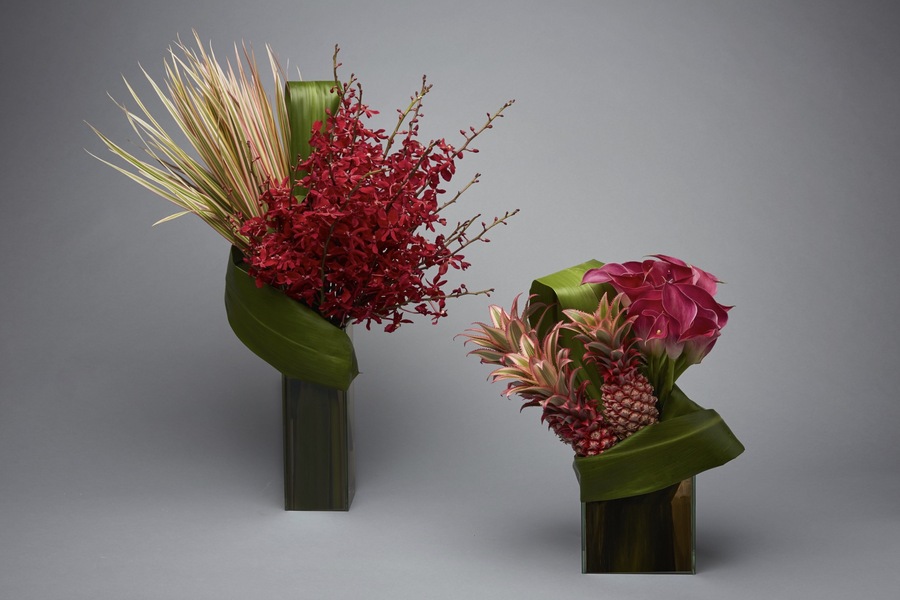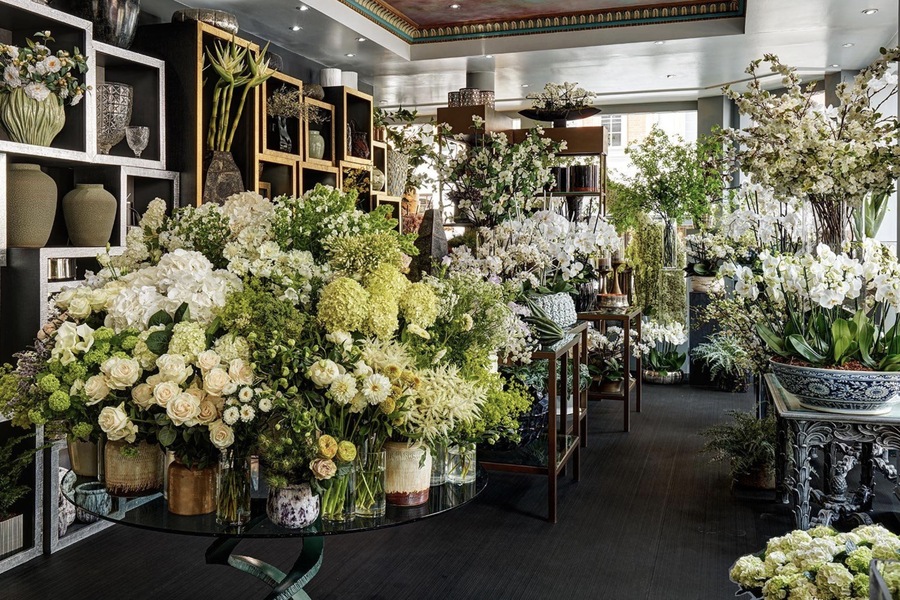The floral industry is ever-evolving, influenced by broader design, fashion, and cultural shifts. Staying ahead of these trends is crucial for luxury flower shops aiming to meet the sophisticated tastes of their clientele. In 2023, the global floral market was valued at approximately USD 18 billion and is expected to grow at a CAGR of 5.5% from 2023 to 2028. This growth is driven by increasing demand for flowers in various applications, including events, gifting, and home decor.
Flower service in Dubai is particularly attuned to these trends, as they cater to a discerning customer base that values exclusivity and premium quality. By anticipating and embracing new trends, these shops can maintain their competitive edge and continue to delight their customers with innovative and stylish floral offerings.
Color Trends for 2024
The color palette for 2024 is expected to reflect a blend of pastels and bold, monochromatic schemes. According to the Pantone Color Institute, the color of the year 2024 is a serene shade of “Tranquil Blue,” symbolizing calm and stability. Societal moods influence this trend, as people seek peace and tranquility in response to our fast-paced and often chaotic world.
Pastel colors like soft pinks, lilacs, and mint greens will dominate spring and summer floral designs, offering a fresh and delicate aesthetic. These colors are often associated with renewal and growth, resonating with consumers’ desire for a positive outlook on life. In contrast, bold monochromatic schemes featuring deep reds, rich purples, and vibrant oranges will make a statement in autumn and winter arrangements, providing a striking and dramatic visual impact.
The fashion industry also significantly influences floral color trends. For instance, recent fashion collections’ use of neon colors has incorporated bright, eye-catching flowers in floral designs. By staying attuned to these trends, luxury flower shops can ensure their offerings remain relevant and appealing to fashion-forward customers.
Popular Flower Types for 2024
Several specific flowers are predicted to gain popularity in 2024, driven by their rarity, sustainability, and unique aesthetics. One such flower is the King Protea, known for its large, dramatic blooms and striking appearance. Its rarity and exotic appeal make it a favorite for luxury arrangements.
Another flower set to rise in popularity is the Cafe au Lait Dahlia, renowned for its large, soft blooms in shades of cream, blush, and peach. These dahlias add a touch of elegance and romance to any arrangement, making them perfect for weddings and special occasions.
Sustainability is also influencing flower preferences. Locally sourced flowers that reduce carbon footprints and support local economies are becoming increasingly popular. Varieties like native wildflowers and heirloom garden roses are favored for their beauty and eco-friendly attributes.
Additionally, traditional flowers are experiencing a resurgence with a modern twist. For example, once considered outdated carnations are now being used innovatively, such as in ombre arrangements or paired with exotic blooms to create unique compositions.

Innovative Arrangement Styles
Emerging styles in floral arrangements reflect today’s consumers’ diverse tastes and preferences. One notable trend is minimalist designs, characterized by clean lines, simplicity, and a focus on individual blooms. These arrangements often use a single type of flower or a monochromatic palette to create a sophisticated and modern look.
Conversely, maximalist bouquets are also gaining traction. These arrangements feature different flowers, colors, and textures, creating a lush and abundant display. Maximalist designs cater to those who prefer bold and extravagant aesthetics, offering a feast for the eyes.
Incorporating non-traditional materials into floral arrangements is another innovative trend. Elements such as dried flowers, feathers, and metallic accents add an unexpected twist to traditional bouquets. This mixed-media approach allows for greater creativity and personalization, appealing to customers looking for something unique and bespoke.
Sustainability in Floral Design
The growing demand for eco-friendly floral arrangements is reshaping the industry. Consumers are increasingly conscious of their purchases’ environmental impact and seek sustainable options. Luxury flower shops can integrate sustainable practices into their offerings in several ways:
- Locally Sourced Flowers: Using locally grown flowers reduces transportation emissions and supports local farmers. It also ensures fresher blooms, as they spend less time in transit.
- Biodegradable Packaging: Replacing plastic wrap with biodegradable materials, such as paper or compostable cellophane, minimizes waste and appeals to environmentally conscious consumers.
- Organic Practices: Offering flowers grown without synthetic pesticides or fertilizers ensures a healthier product for both the environment and the consumer.
Incorporating these sustainable practices benefits the environment and enhances the brand image of luxury flower shops, attracting eco-conscious customers.
Technology’s Role in the Floral Industry
Technological advancements are transforming the floral industry, offering new ways to enhance customer experience and streamline operations. One such innovation is augmented reality (AR), which allows customers to preview arrangements in their space before making a purchase. By using AR, customers can visualize how different arrangements will look in their home or event venue, helping them make more informed decisions.
Blockchain technology is another emerging trend that provides transparency and traceability in the supply chain. Using blockchain, flower shops can track the origins of their flowers, ensuring they are sourced ethically and sustainably. This technology also helps build trust with consumers, who can verify the authenticity and quality of the products they purchase.
AI-driven custom designs are revolutionizing the way floral arrangements are created. AI can generate personalized designs tailored to individual tastes by analyzing consumer behavior and preferences. This enhances customer satisfaction and allows flower shops to offer unique and customized products.
Consumer Preferences Shift
Consumer behavior is evolving, with a growing preference for online shopping, subscription models, and personalized services. The convenience of online shopping has led to a surge in e-commerce for floral purchases. In 2023, online flower sales accounted for 30% of the total floral market, and this trend is expected to continue rising.
Subscription models are also becoming popular, offering customers regular deliveries of fresh flowers. These subscriptions provide a steady revenue stream for flower shops and ensure customers always have fresh blooms in their homes or offices.
Personalized services, such as custom arrangements and curated flower selections, cater to each customer’s unique preferences. By offering customized experiences, luxury flower shops can build strong relationships with their clients and foster customer loyalty.
Social media platforms like Instagram and Pinterest play a significant role in shaping floral trends. Consumers often look to these platforms for inspiration and ideas, influencing their purchasing decisions. Flower shops with a strong social media presence can attract a wider audience and showcase their latest designs and offerings.

Influence of Global Events on Floral Trends
Global events, such as international flower expos and environmental concerns, significantly influence trends in the floral industry. Events like the Chelsea Flower Show and the World Floral Expo introduce new varieties, techniques, and design trends, setting the stage for the upcoming year. These expos allow florists to showcase their creativity and stay updated on industry innovations.
Environmental concerns like climate change and biodiversity loss drive the demand for sustainable floral practices. Consumers are increasingly aware of the environmental impact of their purchases and seek out eco-friendly options. This shift is reflected in the growing popularity of native wildflowers, heirloom varieties, and sustainably grown blooms.
The impact of global events is also seen in the themes and designs of floral arrangements. For instance, the focus on mental health and well-being during the COVID-19 pandemic led to an increased demand for flowers that promote relaxation and tranquility, such as lavender and chamomile.
Conclusion
As we look ahead to 2024, several key trends are set to shape the luxury floral industry. From evolving color palettes and popular flower types to innovative arrangement styles and sustainable practices, staying ahead of these trends is crucial for luxury flower shops. Flower shops can ensure their offerings remain relevant and appealing by embracing technological advancements and adapting to changing consumer preferences.
Luxury flower shops, such as flower service Dubai, are well-positioned to lead the way in these trends, offering unique, high-quality floral arrangements that cater to their clientele’s sophisticated tastes. By anticipating and embracing these trends, flower shops can continue to delight their customers and maintain their competitive edge in the ever-evolving floral industry.

I am happy to give reasonable advice on budgeting to people with any income level. I currently live in Portland, Oregon, and am ready to do freelance assignments and make presentations.
